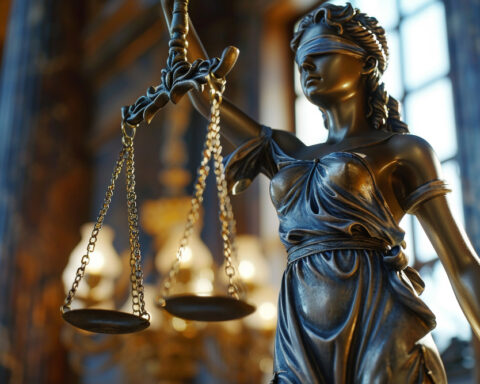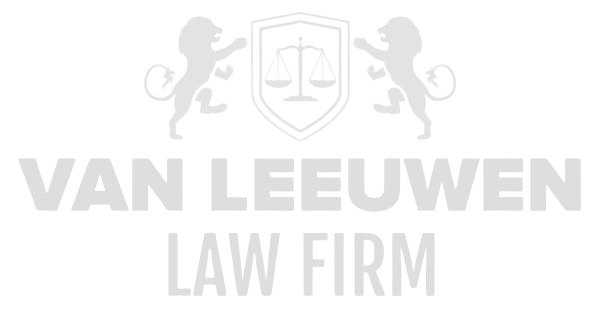Contemporary society finds itself in a state of increasing legal and moral complexity. Where the legal framework surrounding financial and economic crime once appeared clearly delineated, a more layered and ambiguous reality is now emerging. The boundaries between lawful conduct and criminal acts are becoming increasingly blurred due to advancing digitalization, globalization, and the growing intertwinement of public and private interests. These developments compel a fundamental reassessment of legal instruments, the proportionality of criminal procedure, and the ethical dimensions of enforcement. The need for a paradigm shift in the approach to these forms of crime is not merely theoretical or policy-driven; it has become acute, tangible, and legally inescapable. In this context, reputational damage associated with allegations of financial and economic misconduct poses an existential threat to companies, public bodies, and their executives.
Even where criminal liability has not yet been proven, the mere suggestion of suspicion often results in a de facto conviction in the public domain. For corporations and government institutions, the absence of a court judgment offers no protection against the societal consequences of reputational harm, asset freezes, or disruptions to operational processes. Within this context, the classical legal approach — which reacts only after the damage is done — reaches its limits. A new paradigm is needed, one that prioritizes anticipatory legal strategies, where legal expertise functions not merely as defense but as a preventive and strategic tool against the destructive force of unfounded allegations, media campaigns, and administrative sanctions. In the battle against financial and economic crime, it is not only legal justice at stake, but also institutional survival.
The Disruptive Power of Accusations: Legal and Operational Disintegration
Allegations of involvement in financial or economic crime — no matter how preliminary or unfounded — act as a wedge within the core structure of an organization. The mere suggestion of irregularities, such as corruption, money laundering, or accounting fraud, immediately triggers a chain reaction of internal and external measures that undermine the daily operations of a business. Operational processes come under intense pressure as compliance departments are forced to review existing procedures, internal investigations are launched, and key personnel are suspended — temporarily or permanently. This internal fragmentation paralyzes decision-making at the very moment when resolute action is most needed.
Legal implications of such allegations are often so far-reaching that they lead to the abrupt suspension of cooperation with external partners. Banks terminate business relationships or freeze accounts, suppliers sever longstanding contracts out of fear of reputational damage, and shareholders redirect their investments. This domino effect of legal and commercial consequences arises not from a proven offense, but solely from the suspicion thereof. In effect, the legal principle of presumed innocence is inverted, as suspicion functions as an immediate conviction with tangible consequences.
The impact extends beyond the economic dimension. The psychological toll on executives, board members, and employees is substantial. The erosion of professional integrity, loss of trust within and outside the organization, and the inability to publicly counter insinuations create a context in which legal counsel becomes not merely a matter of litigation but an integral component of crisis management and reputation defense. Within this high-stakes environment, precision is critical — requiring a combination of legal expertise, strategic insight, and ethical persuasion.
The International Dimension of Legal Escalation
In an era where business structures operate across borders, the scope of allegations related to financial and economic crime has exploded into a legal phenomenon of global proportions. The jurisdictional reach of regulators, prosecutors, and administrative bodies today extends far beyond national borders. International cooperation in enforcement — through treaties, information-sharing, and inter-agency coordination — ensures that a single allegation can trigger simultaneous consequences in multiple jurisdictions. This results in a fragmented yet synchronous escalation process, confronting an organization with investigations, asset seizures, and media scrutiny on several fronts at once.
In practice, this means that legal strategy can no longer be developed on a national level alone; it must anticipate varying legal systems, procedural rules, evidentiary standards, and sanctioning mechanisms. A suspect company or executive must consider not only criminal prosecution at home but also the possibility of civil litigation abroad, sanctions from regulators in other jurisdictions, or even extraterritorial measures from third countries. This complexity requires a multidimensional approach, where legal coherence is paired with diplomatic finesse.
The threat of so-called “regulatory overreach” — where foreign regulators act without a clear legal basis under the laws of the affected entity’s home country — is no longer hypothetical but a real risk that must be strategically managed. This necessitates compliance measures that are legally defensible across all involved jurisdictions while simultaneously preserving operational continuity. It also demands the involvement of specialized legal advisors with deep knowledge of international sanctions law, cross-border enforcement mechanisms, and the geopolitical undercurrents that shape the legal landscape.
Executives in the Crosshairs: Liability and Moral Condemnation
In the current climate of heightened vigilance against financial misconduct, the position of executives and board members has become increasingly precarious. Where once the criminal law focused primarily on the legal entity, attention is now shifting toward the individuals who lead organizations. This shift is driven by a pursuit of individual accountability, transparency, and personal responsibility, further fueled by public pressure and political incentives. As a result, the actions — or omissions — of directors are subject to rigorous legal and moral scrutiny.
This development exposes executives to a cumulative burden of administrative sanctions, disciplinary measures, civil claims, and criminal prosecution, often simultaneously and without clear delineation of responsibilities. In practice, this leads to legal uncertainty, where the boundary between professional risk management and criminally culpable conduct cannot be clearly drawn. Simply being the ultimate responsible party within a structure that failed to detect suspicious transactions may, in some cases, suffice to be considered a suspect.
Beyond the legal dimension, moral condemnation also plays a major role. Public opinion, shaped by media and political narratives, tends to hold executives immediately accountable for any organizational failure, regardless of actual involvement. This mechanism of public reckoning creates a situation where legal defense is only one part of a broader struggle for reputation, future prospects, and professional survival. In this fraught environment, strategic legal guidance becomes essential — not merely as a defense mechanism but as an active safeguard of executive legitimacy.
The Role of Compliance and Internal Controls: Safety Net or Legal Trap?
The increasingly strict requirements that laws and regulations impose on compliance and internal controls are presented as safeguards against financial and economic crime. In theory, these frameworks provide a protective structure within which organizations can identify, mitigate, and document risks. In practice, however, this same system can serve as a legal trap through which prosecuting authorities infer culpable behavior. Failure to follow an internal procedure, lack of a risk matrix, or insufficient documentation of decision-making is increasingly used by investigators as evidence of negligence or even intent.
The paradox is that the more extensive the compliance framework, the greater the legal exposure. Every mechanism that does not function properly — however minor — can be interpreted as an indicator of deficient oversight or intentional concealment. This dynamic necessitates a fundamental rethinking of how compliance is structured: no longer as a set of static rules, but as a living, adaptive system that is legally defensible in a strategic context. Compliance thus becomes an integral part of the legal defense line, not merely an administrative obligation.
Furthermore, compliance must not be viewed in isolation but embedded within the organization’s broader legal strategy. The roles of lawyers, forensic accountants, and risk officers must be complementary — working together in a coordinated effort where facts, rights, and risks are assessed and documented holistically. In this model, compliance serves not as a formality, but as demonstrable evidence of prudent governance, capable of preemptively mitigating legal liability.
The Mediatization of Criminal Proceedings: Trial by Media as a Criminal Procedural Instrument of Power
In today’s legal landscape, the media plays an undeniable and often disruptive role in shaping public perception around alleged financial and economic crimes. The traditional separation between judicial assessment and public opinion has been effectively eroded in practice, with the media positioning itself as informal yet highly influential actors within the criminal process. Accusations of fraud, corruption, or money laundering are often broadcast widely before a single piece of evidence has been submitted to the court. This premature publicity does not contribute to transparency or truth-finding, but functions as a public execution where the legal principle of presumption of innocence is entirely ignored.
For suspects—both legal entities and natural persons—this constitutes an existential threat. In an era where social media, opinionated reporting, and sensational news platforms facilitate the rapid dissemination of (accurate or inaccurate) information, the reputation of the individual concerned is irreparably damaged even before justice has run its course. This form of ‘trial by media’ carries not only societal consequences but also exerts direct pressure on the formal criminal process. Prosecutors, regulators, and even judges cannot remain immune to the public outrage stirred by such media campaigns.
Legal strategy therefore cannot be limited to courtroom litigation alone. It requires a sharp analysis of the media landscape, continuous monitoring of coverage, and—if necessary—the deployment of legal and communication tools to refute unfounded portrayals. Publications can be challenged through civil procedures, and media relations must be managed with great care to correct the narrative surrounding a case. Lawyers in this context must not only be procedural advocates but also defenders of reputation and integrity in an arena where legal truths are often drowned out by public indignation.
The Role of Regulators as Quasi-Judicial Bodies
Regulators increasingly operate as hybrid entities: on one hand tasked with regulation and supervision, and on the other acting as de facto sanctioning bodies. They possess powers that deeply affect the legal position of companies and individuals, often without the same safeguards as those within formal criminal proceedings. The sanctioning powers of regulators such as the AFM, DNB, or ACM have now reached a level where the distinction between administrative and criminal enforcement has effectively blurred. This development is particularly visible in economic criminal law: millions in fines can be imposed, licenses revoked, or reports made with international ramifications—all without judicial review.
This phenomenon—often referred to as ‘administrative criminalization’—leads to a fundamental shift in the legal playing field. The sanctioning powers of regulators are applied without prior criminal investigation, without the rights to a fair hearing and adversarial process inherent in criminal law, and without the burden of proof required by criminal standards. Often, pressure is exerted on involved parties to cooperate with ‘informal’ processes under the guise of supervision, while the practical consequences are virtually identical to criminal sanctions.
In this context, strategic legal defense is not only about litigation but about early influence on the supervisory process itself. It requires in-depth knowledge of administrative law, the interaction between regulators and the Public Prosecution Service, and the international interplay of reporting obligations within financial-economic supervision. Timeliness is crucial in these matters. Delays in recognizing warning signs or underestimating the legal impact of informal communications with regulators inevitably lead to escalation and irreversible legal consequences.
Forensic Evidence and the Asymmetry of Information
In the domain of financial and economic crime, evidence is typically not provided by direct eyewitness testimony or physical traces, but by complex administrative data, digital reconstructions, and forensic accounting analyses. The evaluation of such data is inherently susceptible to interpretation, with the presentation of figures and documents often giving a misleading appearance of objectivity. This technocratic form of evidence creates an information asymmetry between the prosecuting authorities and the defense, where the party with access to data sources and computational resources usually holds an advantage in legal assessment.
For the defense, it is therefore crucial to regain control over the factual material. This requires not only legal expertise but also access to forensic experts, accountants, data analysts, and compliance specialists. Only by building an independent, robust counter-analysis can the one-sided picture presented by the investigative authorities be effectively challenged. In complex cases, this can involve months of work, where every document, transaction, and communication must be traced back to its origin, context, and legal significance.
Moreover, a legal imbalance often arises in many cases due to the lack of access to certain information held by the authorities. The power to demand digital data, search servers, or request communications from third parties is exclusively wielded by public authorities, without the defense being in a comparable position. This unequal position requires the defense not to be passively dependent on what is provided, but actively to seek sources, reconstructions, and explanatory models that can nuance or refute the factual complex. It is this active, investigative defense strategy that makes the difference between overwhelming force and effective counterforce.
The Importance of Strategic Preventive Legal Advice
In light of increasingly swift and stringent investigation and enforcement, the classical stance of purely reactive action is completely inadequate. Legal advice must not be confined to procedural documents and defenses but must be embedded in the operational thinking of organizations. Strategic legal advice means that already at the design stage of governance structures, compliance routines, and decision-making procedures, potential criminal law implications are taken into account. Law is thus no longer employed merely as a defensive tool afterwards but as a building block for legal immunity.
This form of proactive legal action requires a thorough analysis of all risk areas within an organization: from contractual structures to internal reporting procedures, from anti-money laundering measures to the ethics of remuneration systems. Each of these components contributes to the legal profile of the enterprise and can—if inadequately managed—serve as a focal point for criminal suspicion. In this context, legal advice equals risk management: anticipating the questions justice, regulators, or media might pose.
This demands from the legal advisor a position of integral involvement—not as an external party called in only during crises, but as a structural partner in strategic decisions. This also means that legal integrity is not solely the responsibility of the legal department but must be embraced by the entire governance model. Only in this way can an organization arm itself against the relentless consequences of suspicion that spreads like an ink stain over its name, network, and future.
In Conclusion: Toward a New Legal Ethos in the Risk Society
The fight against financial and economic crime requires more than investigation, prosecution, and punishment. It demands a fundamental reflection on the place of law in society and on the way law offers protection against arbitrariness, abuse of power, and societal hysteria. In a world where risks are institutionalized, expectations are mediatized, and legal truths are drowned out by public opinion, there is a need for a legal ethos that withstands the storms of outrage and simplification.
This new ethos must rest on principles of justice, proportionality, the right to be heard, and a deep conviction that law must not be misused as a political instrument or commercial pressure tool. It takes courage for legal professionals to reason against the tide, to continue to nuance, and to stand up for the rights of those chosen by the system as scapegoats. Especially in matters of a financial-economic nature, where complexity invites premature conclusions, the role of the legal defender is crucial.
Ultimately, the task of the law is to protect what is vulnerable: reputation, legal certainty, and human dignity. And precisely in that protection lies the strength of the rule of law—not in punishment alone, but in guaranteeing a fair trial, a clean procedure, and a future where legal reckoning is not the last word, but the law itself.

















